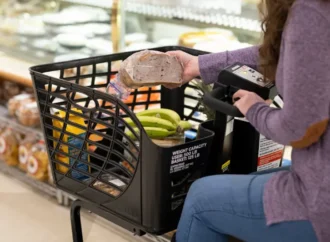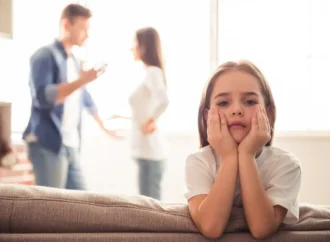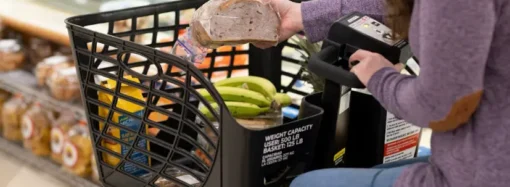How does one make up for lost socialization and the sorrows of isolation?
My husband’s place of employment finally removed its masking requirement about a month ago, leaving my husband commenting on how strange it was to see everyone barefaced for the first time in more than two years. It was almost as if they had forgotten some essential piece of clothing. Even more disoriented was one of his young co-workers who graduated from college within the last year. He pointed out that he had never worked a job without a mask. That young man is emblematic of a whole generation who were making the transition from adolescence to young adulthood under the cloud of lockdowns and mandates—as well as all the social isolation, psychological disorientation, and fear that accompanied those restrictions.
Does the experience of entering adulthood during COVID qualify as trauma—not just personal trauma, but collective? Very likely.
But how exactly will it play out? And what behaviors and attitudes will this experience ingrain in the “COVID generation”? It is impossible to predict with certainty, but there are a few features of life during the pandemic—particularly the lack of social interaction and the role of technology in propping up daily life—that may permanently stunt those who entered adulthood at that time.
One area of this stunted growth shows up in the high incidence of mental health issues. “Global prevalence of anxiety and depression increased by a massive 25%” during the first year of the pandemic, as the World Health Organization declared in March 2022. Contrary to past trends, which show “a u-shaped curve of well-being over the course of a lifetime, with the youngest and oldest groups faring best and a dip for the middle aged,” this increase in mental health problems is most dramatic in young adults aged 18 – 24, according to recent survey from Sapien Labs.
The young-adult years tend to be a time of social experimentation and grounding, a time when most of us either reconsider the beliefs and attitudes we grew up with or make them our own. It’s a time when we grow in self-assurance and the ability to navigate difficulties, both personal and interpersonal. And all of this typically plays out on the social stage, through face-to-face interactions with people in classrooms, workplaces, and recreational settings. But for a whole generation, these experiences have been, at best, stunted and limited by COVID lockdowns. Tara Thiagarajan, the founder of Sapien Labs, states that the emerging generation has “arrived at age 18-24 and college with one-tenth of the expertise in solving social issues, living together, co-existing in productive ways without conflict.” She says that “at age 18, now you have the same experience of interacting with people as a 7- or 8-year-old had in the past.”
Please read that again. A seven- or an eight-year-old.
What makes this deprivation infinitely worse is the illusion we have encouraged throughout the pandemic that technology can replace real, face-to-face social interaction. As the Sapien Labs survey notes, “Recent global statistics suggest that people with internet access spend on average seven to 10 hours per day online, which could crowd out in-person interaction that is key to building a strong social self.” These virtual counterparts are just as good, the narrative tells us, so don’t worry. You can’t go to your grandma’s birthday party, but you can call her on Zoom. You can’t go to school, but that’s okay, because we’ve got this great virtual classroom set up for you. Heaven forbid you go on an in-person date and learn how to communicate with the opposite sex, but there are lots of options for virtual “romance,” as evidenced, for example, by the sharp rise in pornography consumption during lockdowns.
Today’s young adults find themselves socially stunted, crippled by depression and anxiety, and addicted to technology. And if you think this phenomenon is limited to one side of the political aisle or the other, think again. Regardless of our political positions or opinions about the pandemic, we’ve all been subject to an enormous amount of fear-mongering, social isolation, and increased technology use—a reality that has been especially formative for the young. Technology cannot save us; it is not the solution to social isolation. In fact, it has exacerbated the problem.
So how will these trends play out over the next 20, 40, or 60 years? It’s hard to tell, but the behavior of our grandparents may give us a clue. Many of them experienced the Great Depression and the rationing and shortages of World War II as children, and those experiences still influence their behavior. All her life, my husband’s grandmother saved Cool Whip containers for a rainy day, and my grandfather plants an annual vegetable garden large enough to feed a small army, despite being financially stable. They’re not alone: an entire generation shares similar attitudes and habits born out of a level of deprivation subsequent generations have never known. And so will it likely be with the COVID generation. Only this time, the deprivation is psycho-social, not necessarily financial. How does one make up for lost socialization and the sorrows of isolation?
It’s time to be brave again. We’ve removed the masks; now it’s time to put down the cell phone, step out into the real world, and talk to someone face-to-face.
—
Image Credit: Pixabay
5 comments















5 Comments
Richard
May 9, 2022, 11:47 pmThe best lesson this young generation needs to understand is that the totalitarian measures were all enforced by Progressives/Marxists/Democrats and the high inflation and upcoming food shortages are all a result of the Covid tyranny.
REPLYTionico
May 10, 2022, 3:20 amAs the whole charade unfolded, I an a good many of my friends simply ignored most of it. One poor guy wrked at Costco, so he had to don the mug nappie at work. Out in the parking lot gatheirng carts he left it off. He brougth me into the store one time, I refused to wear a mask. Got some "deer in the headlamps" stares but moslt I just smiled and waved back at them. A few slank off into the corner and sulked. Foks in my chiurch continued to get together in homes, and did a few things together, but sadly the elders were afraid to contnue meeting. We all cheered when Johnny Mac flat refused to lock up the churchhouse, and REALLY cheered when the bank caved to the City of LA and broke their lease on the weekend use of their parking lot, then the Jewish Sunagogue down the block appproached them and said Hey, we only use our lot on Shabbat, why don’t you just have your folks park in it for yur gatherings on Sunday? I don;t know of one family which made their kids wear them in the neighbourhoood. They all homeschool anyway so not much changed. We were an oasis of sanity and fun in the midst of apurgatory of shame, fear, misery, hard provisions , etc. I had a signficant court case kicked down the road for more than a year, was unable to attend in person, and lost, I believe because the jury had no idea who this injured guy is, how he moves, etc. Just some fictitious name on the court papers. That one nhurt, badly.
REPLYIn town, though the fear was palpable, as government goon squads roamed about looking for hom they might devour for some petty infraction, the better to fine you for, my dear. Government offices, wrking remotely, got done only about half what they already had sandbagged down to before the rice rabies hit.But Im quite certian that if I had built that garage with no permit the vultures most certainly have landed for their weekly feeding frenzy. Figure THAT one out.
Tionico
May 10, 2022, 3:23 amGenerally I like the new comment system. BUT a serious suggesstion.. the black type against the medium grey background of the boxes to fill in makes it near impossible to see, particularly as that type font is SO TINY. Yoiu’ve got lots of smace. How about a bold outline round the data entry area, and a clean WHITE backdrop for the type? And maybe two or four points larger on the font?
REPLYAnnie Holmquist@Tionico
May 10, 2022, 1:23 pmThank you for the feedback! This will be passed along to our tech side of things.
REPLYLinks for 9 May 2022 – Just the Links
May 10, 2022, 10:30 am[…] The long-lasting negative impacts of harsh covid responses, https://intellectualtakeout.org/2022/05/rehabilitating-the-covid-generation/ […]
REPLY